15 October 2025 – Sunflower delivers a van load of medical aid to frontline medics in Kramatorsk. Medics of the Arei regiment are savings lives of their Ukrainian men defending Donbas from the most massive onslaught of 2025. There are so many wounded, and there’s an extreme demand for all medical supplies. We brought standard medical consumables – bandages, syringes etc. – as well as specialist FERNO rescue gear from the NHS England Ambulance service.

We sincerely appreciate and thank NHS England, especially paramedics in Suffolk and Isle of Wight for donating the ultra-valuable FERNO rescue equipment. Folding and flexible stretchers are extremely useful for evacuations, and you donated five!!! Such gear very very expensive and we wouldn’t be able to afford it otherwise.
Thanks so much for the ambulance kit, including OLAES Modular bandages, neck braces, Fenton compression bandages, etc. etc.
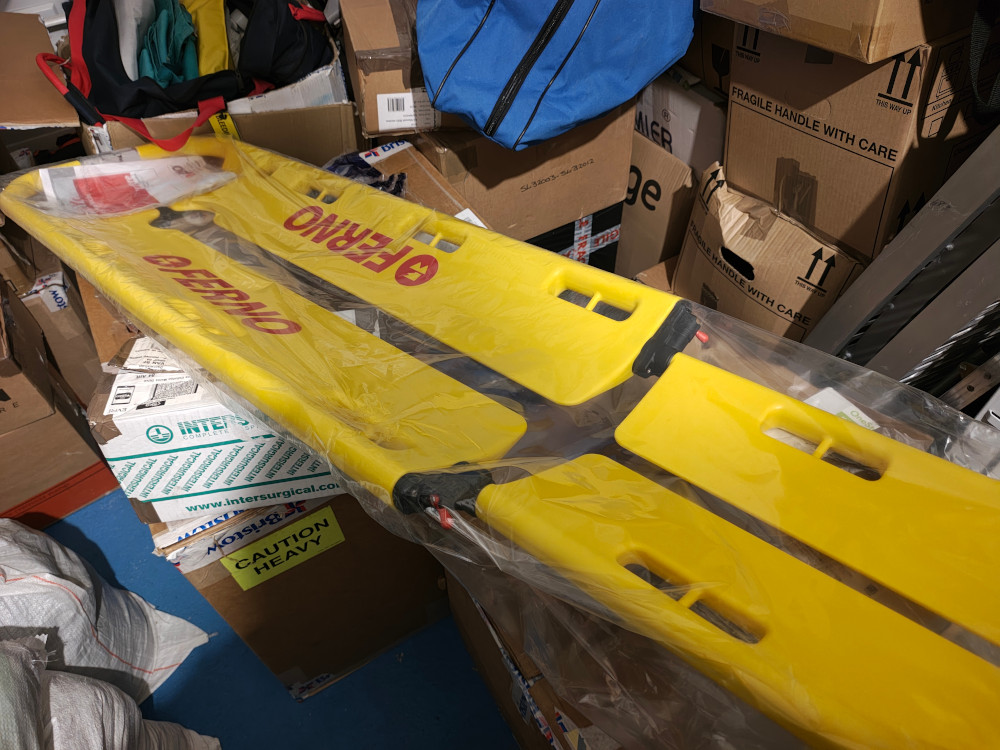
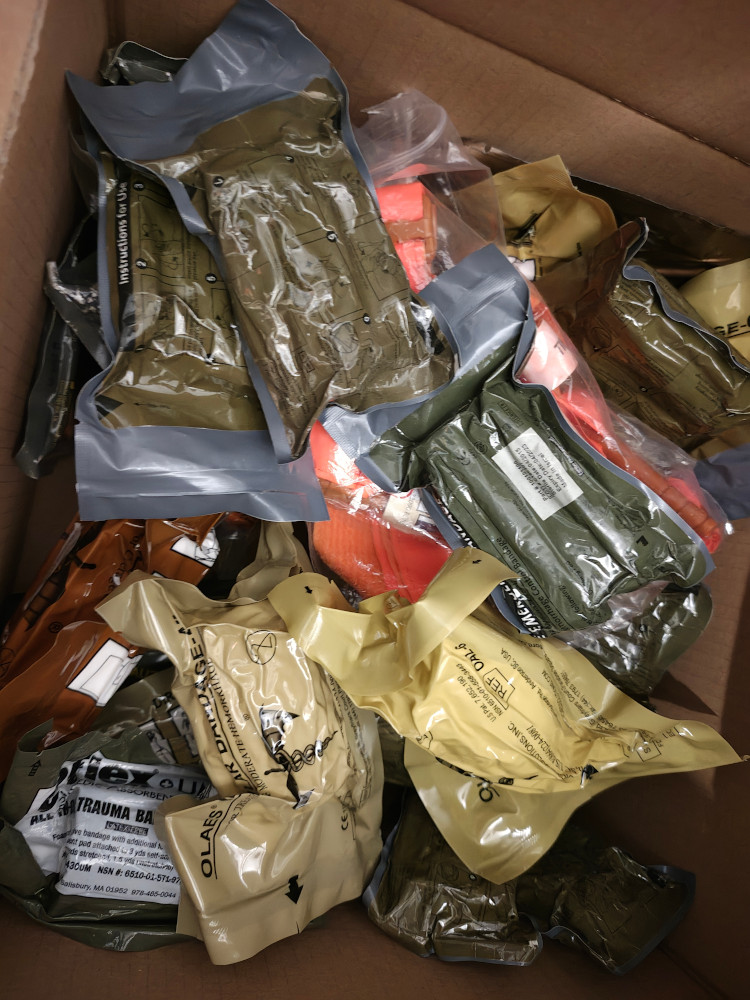
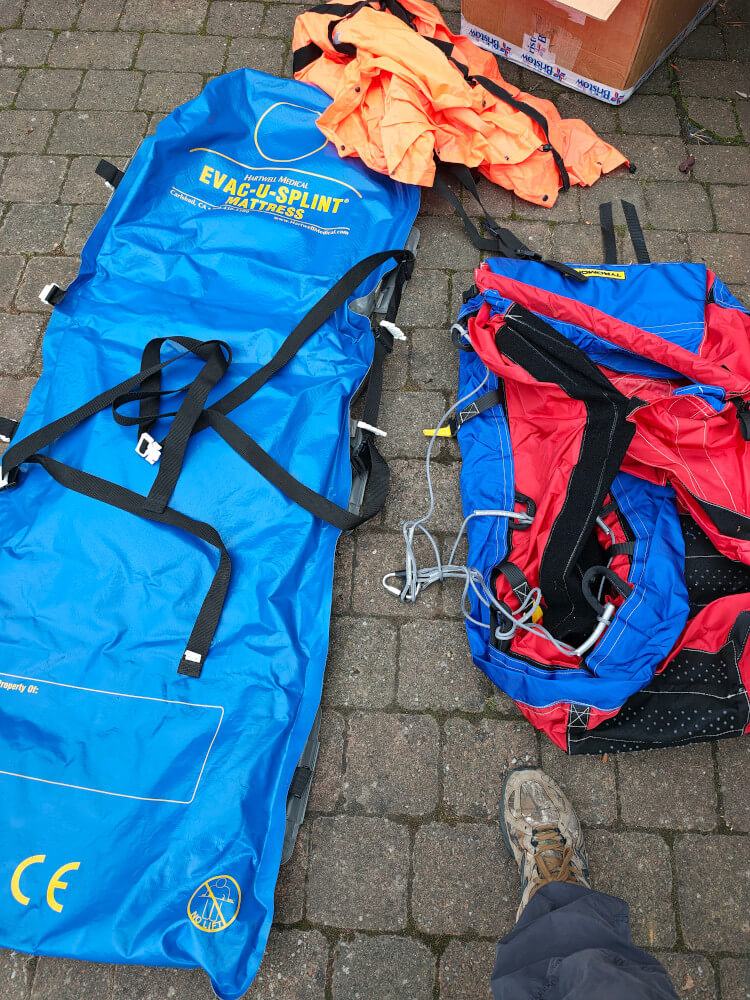
We thank NHS trusts of Yorkshire, and Jacob’s Well Appeal charity, for donating loads of crutches, bandages, syringes. We cannot thank you enough!
Your donation will save tens of lives. Thank you so much!
Being a Scottish charity, we invite NHS Scotland to participate in our programme more actively.
The journey from Edinburgh to Kramatorsk
We went to Arei at Kramatorsk after our trip to Kherson (there, we delivered medical supplies and an armoured van for the evacuation of civilians – please read our report). From Kherson, we drove via Dnipro, and took the main road to Pavlohrad, the gateway to Donbas.
Oleg sent all volunteers’ team back to Scotland: too dangerous. Stevie wanted to join him, but he had to take part in the SNP Party conference and he rushed to Scotland as well. Oleg set off from Dnipro on his own.
The Drone danger
The direct road to Kramatorsk is off limits now, because it’s within the drone range. Now all cars on roads within 30km to the Russian positions are considered targets for the Russian kamikaze drones. There are already reports that drones can reach as far as 40 km.

They are using three types of drones: small “First Person View” or FPV “kamikaze” drones that carry explosive charges. They fly over roads, find vehicles or people and kill them.
The second type is “bombers”, which fly over a stationary object and drop a mine from above. The third is “watchers”, which are FPV drones that sit by the roadside for hours or days, until they see a passing vehicle. After that they hunt it from the back and destroy it.
A brief visit to Peru
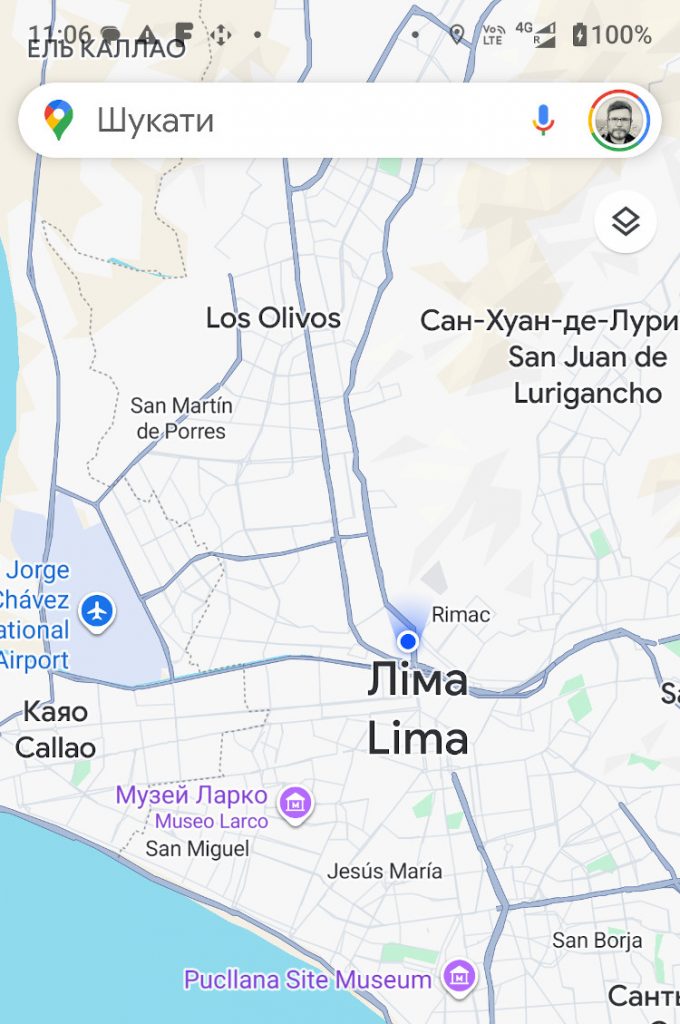
Because of the drone danger, we had to take a massive detour through villages. After going close to the front, we found that our GPS SatNav was showing that we were in Lima, Peru….!
This is a standard tactic used by Ukraine: they jam radios so that Russian drones would lose their navigation coordinates. We saw it in Kharkiv before.
After many hours of driving through small villages and fields, Oleg reached Kramatorsk. Here, the medics of the Arei regiment met him.
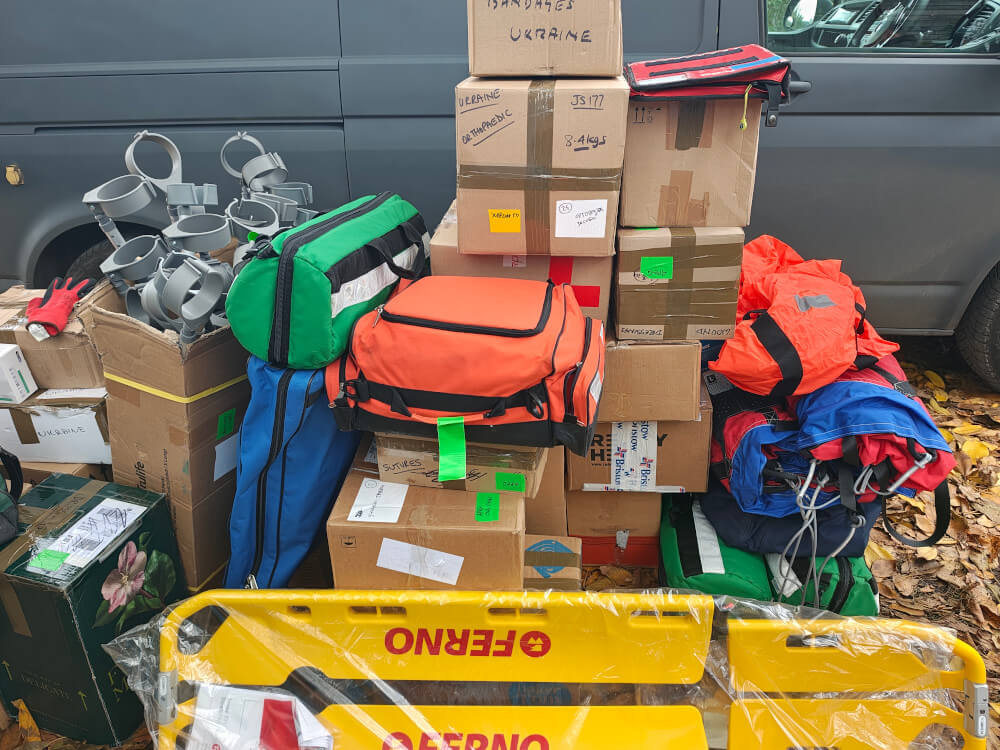
After unloading the supplies from Oleg’s van, they sat for a cup of tea and shared how the war has changed, and what their challenges are.
How the war in Donbas changed in 2025
Up until 2025, ambulance crews could evacuate the wounded from the front line. But in 2025 the number of drones has exceeded all imaginable numbers. It feels like there are more drones than people.
In 2022-2024, small FPV kamikaze drones could fly 5-7 km. After the wounded were dragged out of the kill zone (often by hand), medics could evacuate them in an ambulance.
In 2025, drones now fly as far as 30 or even 40 km. It’s just not possible to drag a wounded person by hand from the 30 km kill zone. Any attempts to evacuate them with an ambulance mean that the Russians will spot it and hunt the ambulance down. The medics told me how one of their ambulances was blown up 20km south just a few days ago.
Medics do try to evacuate the wounded, but often it’s not possible. In this case, the wounded are told to sit in the trenches. Medics send bandages, painkillers, anti-inflamatories etc. by drones. A medical drone flies over the trench where the wounded person is hiding, and drops them the life-saving supplies from the air. Sometimes they drop them precisely where needed, other times they miss.
Even if the medical supplies are dropped 10-15 metres away, the wounded person may not be able to reach them: too dangerous to stick their head out. The medics should try again.
As a result, Ukrainian men who are wounded have to self-medicate in the trench and wait for days for a favourable moment for evacuation. The problem is, the Russians may attack, and that moment will never come. They may be captured or killed before they receive any medical help.
It’s all sad and very brutal. We are coming into the cold, rainy and dark winter. Where men are sitting in the holes in the ground, bleeding, without painkillers, without medical help, with only a faint light of hope.
We don’t pretend we know how to make things better. It’s brutal carnage. Medics are risking their lives every day and trying to save and many lives as possible. We can only do one thing: bring them more help.
To Kharkiv
It was getting dark when Oleg set off for Kharkiv. The road from Kramatorsk to Izium has become a drone shooting range. Ambulance drivers told him how to make a detour through the side-streets of Sloviansk.

When you get closer to Izium, the road is covered with anti-drone nets. They do provide a good level or protection for the drivers. But before you get there, the roads are not covered, and one needs to drive very fast.
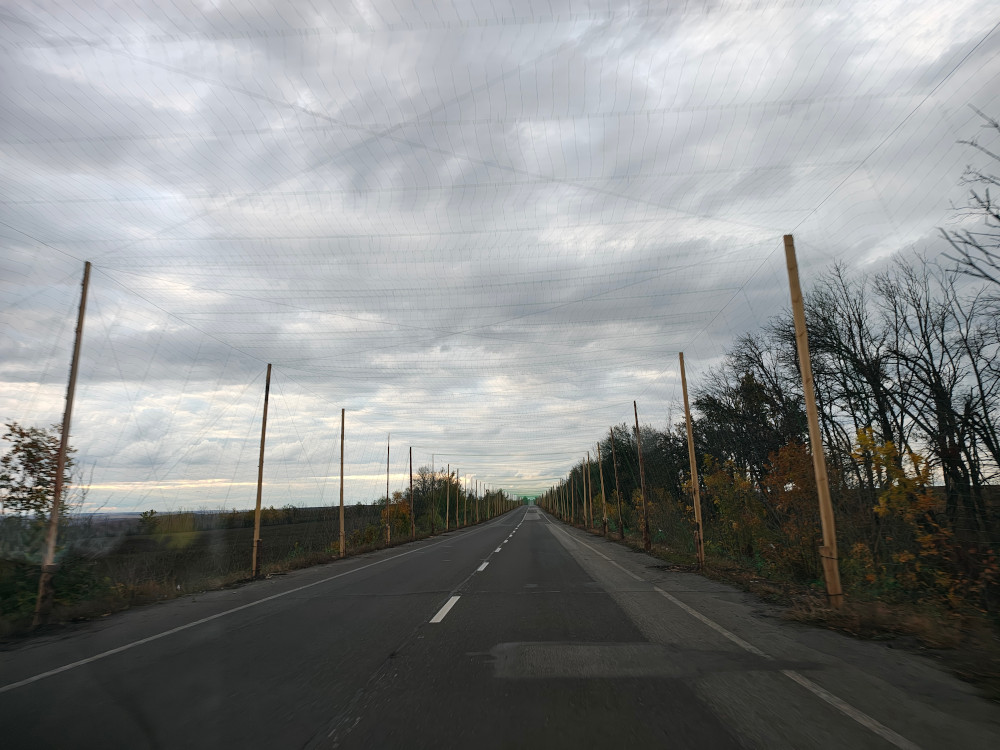
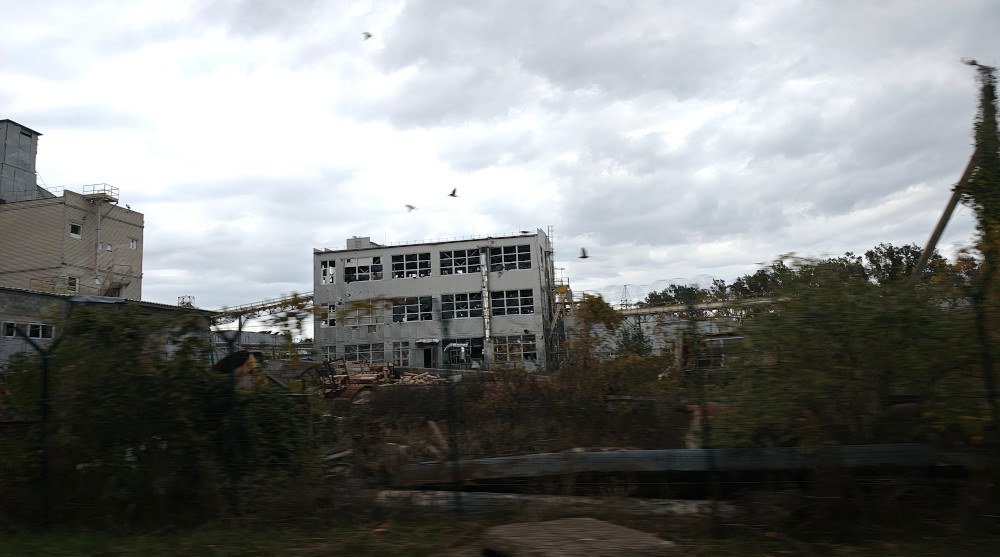
It sounds strange to say it, Oleg and his van made it to Kharkiv late at night, which sounds like “back to safety”. It’s all relative after all.
What supplies are needed
Before Oleg left, he asked Vano, the head medic, what were they lacking now. He said that they are really short of painkillers and anti-inflamatories.
Oleg said that he could bring Ibuprofen and Paracetamol, but not any stronger prescription painkillers. However, we can buy them in Ukraine from a wholesale distributor, and send them directly. This could be cheaper and quicker.

0 Comments for “Kramatorsk: medical aid to save lives”